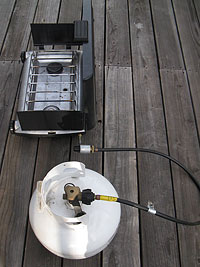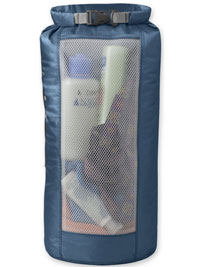
Although 16oz disposable canisters are the most popular fuel source for these stoves, adapter hose are available to work with refillable propane tanks
In my last post I talked about the Coleman liquid fuel camping stoves and how that relatively simple and durable design has proven itself for several generations of family campers. Today I’ll take a look at the propane camping stoves, which have largely replaced liquid fuel stoves in popularity. Propane stoves are self-priming, which is a big advantage over liquid fuel stoves, and their propane tanks are sealed which eliminates spill and smells.
In my experience with several of these models, they are not quite up to the construction standards of the Coleman Model 425 liquid fuel stove, which has a heavier-gauge steel construction and higher-end burner assemblies. Even if you won’t be passing these camping stoves down to your children, though, they’re still good stoves that will give you years of effective service.
Continue reading →



